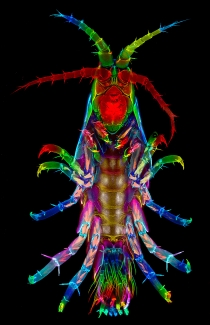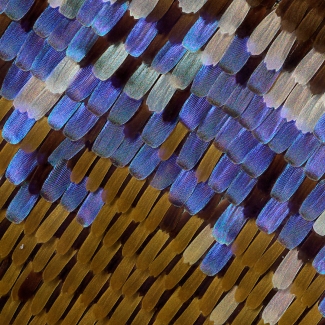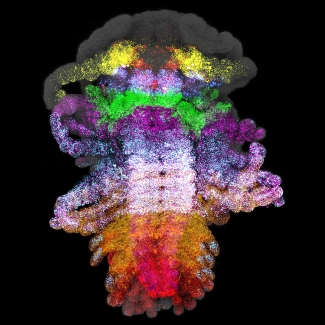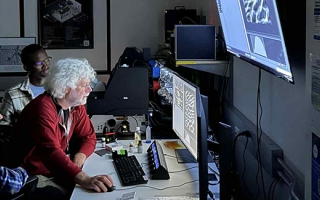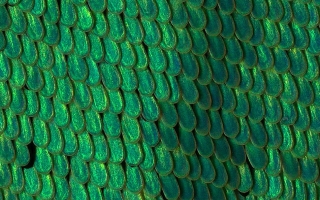Full Name
Nipam Patel
Title
Director

- Email:
- Phone:
- Fax:
- CV:
File
- ORCID ID:
0000-0003-4328-654X
A.B., Princeton University, 1984
Over the past two decades, developmental biologists have made great strides in understanding embryonic pattern formation at the genetic, molecular, and cellular levels. Much of this advancement can be attributed to the remarkable success of studies of pattern formation in model systems, such as the fruit fly Drosophila melanogaster. Identification of genes that play major roles in setting up the body plan, combined with the subsequent discovery that many of these genes are well conserved even between different phyla, has also led to a renaissance in the investigation of the links between evolution and development. Using information collected from studies of Drosophila development, my lab and others are beginning to explore the degree to which developmental pathways have been conserved or altered between various arthropods. Insights into the nature of developmental and molecular alterations will help us to understand the evolutionary changes in the mechanisms of pattern formation and provide a molecular basis for analyzing the diversification of body morphologies and developmental mechanisms.
Currently the research of the lab focuses in three main areas:
- The role of Hox genes in arthropod development and evolution. Using genetic manipulations (CRISPR, RNAi, mis-expression via transgenesis) we have been able to define the role that these genes play in patterning the body plan of Parhyale, and ways in which they have contributed to evolutionary changes in arthropods. We also examine upstream events that mediate early segmentation and downstream interactions that pattern the individual appendage morphologies.
- The ability of Parhyale to regenerate its germline. Parhyale appears to specify its germline via a maternal mechanism, but ablation of the germline reveals that this animal can regenerate germline post embryonically from a somatic lineage.
- Structural coloration and transparency in butterflies. Physicists have defined the way in which chitin-based nanostructures generate color in butterfly scales, used particularly to create blues and greens, as well as create remarkable wing transparency in some species. We are focused on understanding the developmental and cellular mechanisms that generate these nanostructures in a variety of butterfly species through genetics and live imaging approaches.
For further details, please visit www.patellab.org.
Bruce, H. S., & Patel, N. H. (2022). The Daphnia carapace and other novel structures evolved via the cryptic persistence of serial homologs. Current Biology, 32(17), 3792. doi:10.1016/j.cub.2022.06.073
Pomerantz AF, Siddique RH, Cash EI, Kishi Y, Pinna C, Hammar K, Gomez D, Elias M, Patel NH. 2021. Developmental, cellular, and biochemical basis of transparency in the glasswing butterfly Greta oto. J Exp Biol 224, jeb237917. doi:10.1242/jeb.237917
Bruce, H.S., Patel, N.H. Knockout of crustacean leg patterning genes suggests that insect wings and body walls evolved from ancient leg segments. Nat Ecol Evol 4, 1703–1712 (2020). https://doi.org/10.1038/s41559-020-01349-0
Thayer, R. C., Allen, F. I., & Patel, N. H. (2020). Structural color in Junonia butterflies evolves by tuning scale lamina thickness. eLife 2020;9:e52187 doi: 10.7554/eLife.52187
Sun, D. A., and Patel, N. H. (2019). The amphipod crustacean Parhyale hawaiensis: An emerging comparative model of arthropod development, evolution, and regeneration. WIRES Developmental Biology doi.org/10.1002/wdev.355
Martin, A., Serano, J. M., Jarvis, E., Bruce, H. S., Wang, J., Ray, S., Barker, C. A., O’Connell, L. C., & Patel, N. H. (2016). CRISPR/Cas9 Mutagenesis Reveals Versatile Roles of Hox Genes in Crustacean Limb Specification and Evolution. Current Biology, 26(1), 14–26. doi:10.1016/J.CUB.2015.11.021
